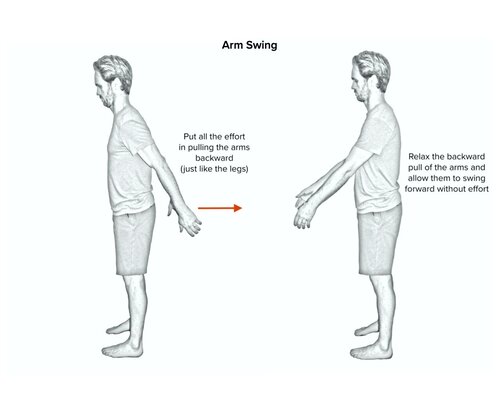You ever jump into a workout, feeling unstoppable, only to tweak your shoulder halfway through? Yeah, we’ve all been there—and it’s no fun. The shoulders are involved in almost every upper-body movement, so it is extremely important to warm them up before trying to lift weights. A quick, targeted shoulder warm-up routine can save you from injuries, boost your range of motion, and set you up for a much better session in the gym.
Before every single upper body workout, I always do a shoulder warm-up. It takes as little as 5 minutes and it always has me feeling a lot more loose and ready to lift, and on top of that I have avoided shoulder injuries my entire lifting career – much of that thanks to my shoulder warm-up routine. So, it seems like a no-brainer for everyone.
The shoulder joints are flexible but they need a little bit of extra caretaking because they are one of the body parts that are the most susceptible to injury, and if you do injure them, you won’t be able to do almost any upper body lifts for quite a while.
So, don’t go diving straight into heavy lifting without giving them a bit of prep. A warm-up routine will send blood to the shoulder area, waking up the muscles and loosening them up. This will help you avoid injuries like rotator cuff tears that will haunt you for a lifetime. Okay, enough preaching, and time to get into a shoulder warm-up routine you can do to avoid injuries and improve performance in the gym (or as an athlete in a sport)!
Understanding Shoulder Anatomy
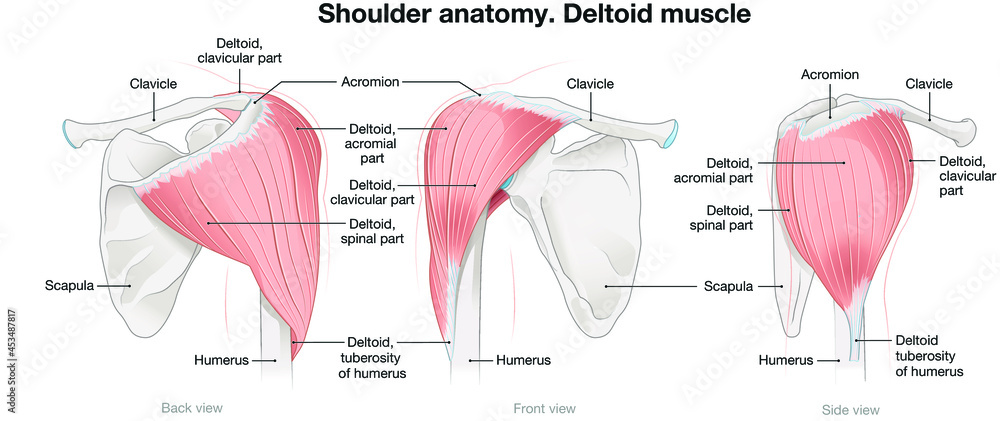
Before we get into the routine, it’s important to break down and understand the shoulder muscles and joints. We’ve got three bones playing main roles here: the humerus (that’s your upper arm bone), the scapula (fancy name for your shoulder blade), and the clavicle (or collarbone as most of us know it). Together, they make the shoulder joint, working with a bunch of muscles and tendons to keep things in check.
Here are the most involved muscles in upper body movement:
- Deltoids: These are the muscles capping your shoulders, comprising three distinct segments: anterior (front), helping in arm raises and presses; lateral (middle), crucial for arm lifting to the side; and posterior (rear), involved in pulling movements. Together, they’re pivotal for nearly every arm activity.
- Rotator Cuff: Think of this as your shoulder’s security team. It’s made up of four muscles that work undercover to stabilize and rotate the shoulder joint smoothly. The rotator cuff is involved heavily in things like throwing a baseball.
- Trapezius: This muscle spreads out like a kite from your neck to your mid-back. It’s the muscle that shrugs your shoulders and helps tilt and turn your head and neck.
- Pectoralis Major: This is your chest muscle, which feels like it’s doing the heavy lifting when you push open a door or bench press at the gym.
Swing by and read our article on shoulder anatomy for an in-depth explanation of the shoulder muscles.
General Warm-Up Guidelines
Okay, now that you’ve got the anatomy down, let’s chat about how to kick things off with some important warm-up guidelines:
- Duration: You’re looking at spending about 5-15 minutes to really get your muscles and joints in the game. I’d say 5 minutes is really the bare minimum, and there’s no maximum limit to a warm-up. Just go until you feel loose, but not until you are actually straining and working out the muscles.
- Intensity: Ease into it with lighter exercises, there is no need to work super hard here. Just go until you feel the stretches, but not where it is hurting or exhausting you.
- Variety: Mix it up with dynamic stretches, exercises to get your range of motion flowing, and some drills to wake up the muscles.
For more exercise options, you can check out our article on shoulder mobility exercises.
Stretches to Add to Your Shoulder Warm-Up Routine
Now we can get into the best stretches you can add to your shoulder warm-up routine that will loosen up all parts of the shoulder joint, and prepare you for a strong day in the gym.
Arm Circles
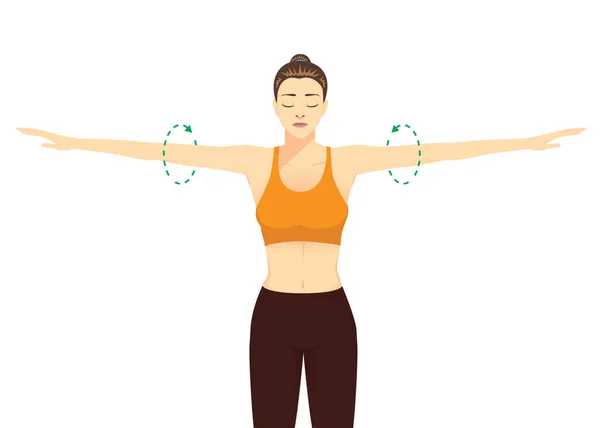
Arm circles are an easy way to send a wake-up call to your shoulder muscles. They boost flexibility and widen your shoulder joints’ motion scope.
How to Perform Arm Circles:
- Plant your feet about shoulder-width apart.
- Stretch your arms straight out to the sides like you’re an airplane.
- Spin your arms in small circles.
- Slowly make those circles bigger.
- Do 10-15 circles going forward, then hit reverse for another 10-15 going backward.
Shoulder Blade Squeezes
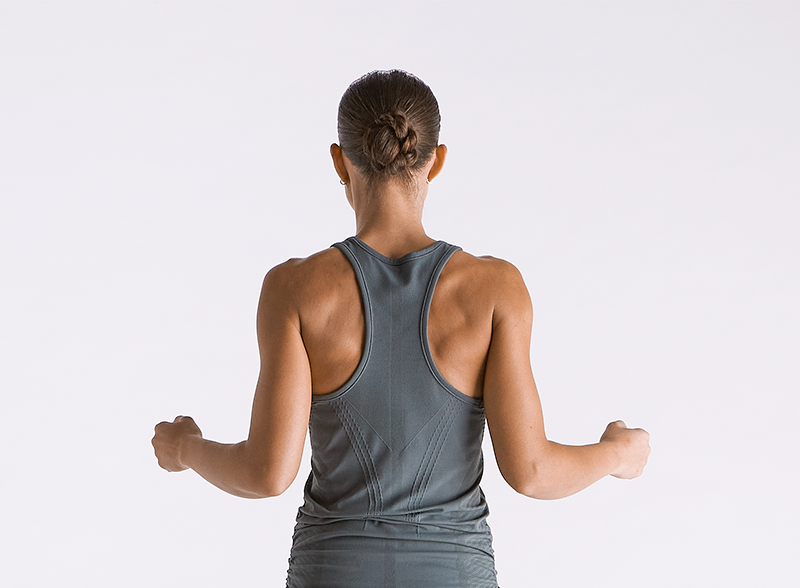
Shoulder blade squeezes are great for the muscles that keep your shoulder blades in check. This move is a game-changer for nailing good posture and supporting the upper back.
How to Perform Shoulder Blade Squeezes:
- Stand tall or sit with your back straight, arms hanging loose by your sides.
- Pretend you’re trying to crush a tiny, pesky grape between your shoulder blades.
- Hold that pinch for about 3-5 seconds.
- Let go, then repeat for 10-15 squeezes.
Cross Body Shoulder Stretch

Cross body shoulder stretches are great for relieving tension in your shoulder muscles and improving flexibility across your upper body. I do these before every lift.
How to Perform Cross Body Shoulder Stretch:
- Stand upright or sit with your back straight.
- Bring one arm across your body at about chest height.
- Use your other hand to pull the elbow of the stretched arm towards your chest.
- Hold the stretch for at least 15-30 seconds, then switch arms.
Shoulder Pass Throughs

Shoulder pass throughs increase range of motion and flexibility, engaging the shoulders, chest, and upper back. They can be a bit more difficult for some, so just work through them slowly and they will become easier.
How to Perform Shoulder Pass Throughs:
- Stand with feet shoulder-width apart, holding a stick or a resistance band in front of you with an overhand grip.
- Keeping your arms straight, lift the stick or band overhead and down behind your back.
- Return to the front and repeat the motion for 10-15 repetitions.
Shoulder Rolls
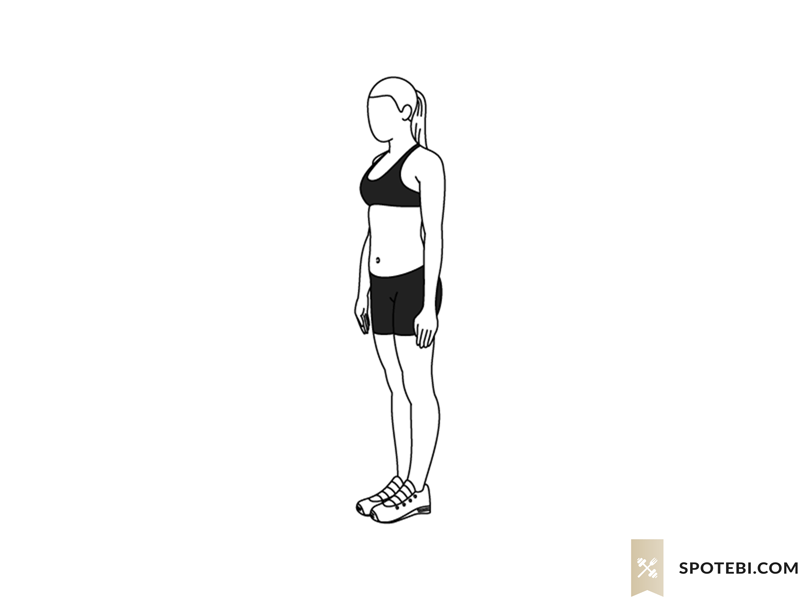
Shoulder rolls help to loosen tight muscles and ease tension in the neck and shoulders, promoting relaxation and better posture. These are great before hitting the traps.
How to Perform Shoulder Rolls:
- Stand or sit with your spine straight.
- Slowly roll your shoulders forward in a circular motion for 10 counts.
- Reverse the direction, rolling your shoulders backward for another 10 counts.
Arm swings powers up the blood circulation and gets your muscles nice and ready for the heavier stuff. They are more dynamic and free-flowing, so they will really warm-up the whole upper body.
How to Perform Arm Swings:
- Stand with your feet firmly planted shoulder-width apart, arms relaxed at your sides.
- Swing your arms forward, reaching shoulder height, keeping them straight.
- Then swing them back, aiming for a comfortable stretch.
- Back forth, back forth – all in a nice controlled rhythm.
For arm swings, I aim for anywhere between 15 to 20 reps.
Tricep Stretch
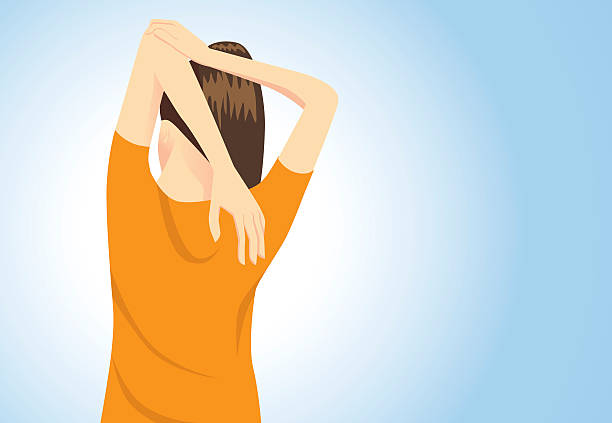
The tricep stretch targets the muscles at the back of your upper arms, which will help with overall upper body strength and mobility.
How to Perform Tricep Stretch:
- Raise one arm overhead, bending the elbow to drop your hand towards your back.
- With your other hand, gently press on the bent elbow to deepen the stretch.
- Hold for 15-30 seconds, then switch arms.
Arm Swings (Side to Side)

Side to side arm swings target the deltoids and pectorals, enhancing lateral mobility and flexibility.
How to Perform Arm Swings (Side to Side):
- Stand with your feet slightly wider than shoulder-width apart.
- Swing your arms across the front of your body, alternating the top arm each time.
- Perform the swings for 20-30 seconds, maintaining a rhythmic motion.
Internal Rotations

Internal rotations strengthen the rotator cuff muscles, crucial for shoulder stability and health.
How to Perform Internal Rotations:
- Stand beside a door or a wall, or use a resistance band attached at elbow height.
- Hold your elbow at a 90-degree angle close to your side.
- Rotate your forearm towards your body until it is in front of your stomach.
- Slowly return to the starting position and repeat for 10-15 repetitions.
External Rotations
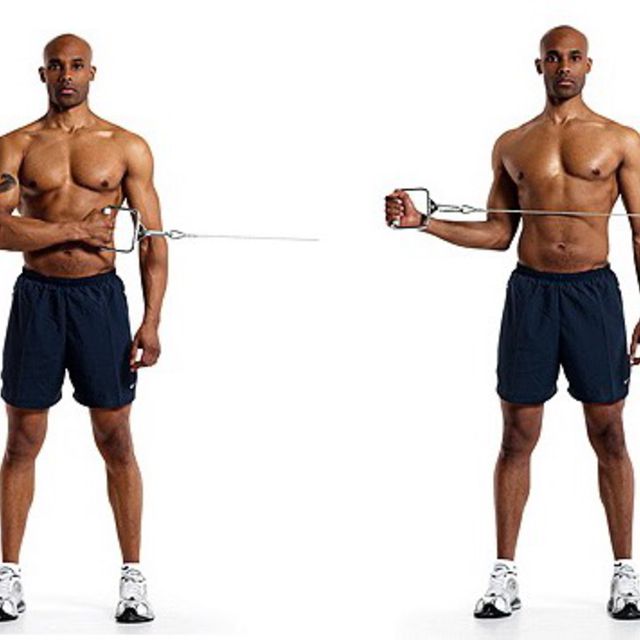
External rotations focus on building strength in the rotator cuff, enhancing your shoulder’s ability to rotate effectively.
How to Perform External Rotations:
- Similar setup as internal rotations but rotate your forearm away from your body.
- Keep your elbow pinned to your side throughout the motion.
- Perform 10-15 repetitions per side.
Mixing these warm-up stretches and exercises into your routine is a GAME-CHANGER. I cannot stress it enough. Do a routine of all these exercises and in just 5-10 minutes you will feel drastically better and more ready to lift than if you had skipped the warm-up entirely.
Sample Shoulder Warm-Up Routine
Here’s a shoulder warm-up routine that ticks all the boxes. Feel free to tweak the reps and time based on what you need.
| Exercise | Reps | Sets |
|---|---|---|
| Arm Circles | 15-20 | 2 (1 going forwards, 1 going backwards) |
| Shoulder Blade Squeezes | 10-15 | 1 |
| Shoulder Rotations | 10-15 per arm | 1 |
| Cross-body Stretch | 45 seconds per arm | 1 |
| Arm Swings | 10-15 per arm | 2 (1 front to back, 1 side to side) |
| Shoulder Rolls | 15-20 | 1 |
| Tricep Stretch | 30-45 seconds per arm | 1 |
This routine is a nice mix to get your shoulders all set and ready, boosting your flexibility, strength, and balance.
Personalizing Your Shoulder Warm-Up Routine
Starting with a basic routine is great, but you can and should always tweak the routine to fit whatever your own needs are. We all react differently to workouts, so tailoring your routine helps a lot. For example, if you feel like your rotator cuff is extra tight, maybe spend time more time with external rotations. Use this guide as a baseline but do whatever you need most!
Tips for Personalization
- Mix Up Reps and Sets: Crank up or dial down the reps and sets depending on how you feel.
- Zone In on Problem Areas: Got some lingering old injuries? Focus on them with special stretches and exercises.
- Get the Right Gear: Use resistance bands or light weights if you like. If interested in band work, check out our list of the best resistance bands for shoulders.
- Loosen Up: Got really stiff shoulders? Add more shoulder mobility exercises.
- Feel the Warmth: If you’re somewhere cold or haven’t really moved much, give a bit more time to your general warm-up to warm up properly.
Tweaking your warm-up means you’re prepping your shoulders just right for what your workout day has in store.
Benefits of Incorporating a Shoulder Warm-Up Routine
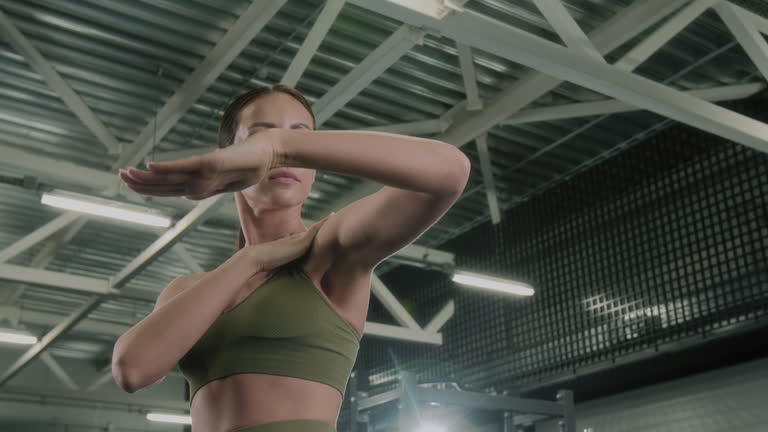
Mixing a shoulder warm-up into your workout routine comes with many benefits that will boost your performance and keep you away from the injury zone.
- Injury Prevention: The single most important reason for a warm-up, is that a good warm-up gets the muscles and tendons in gear, cutting down my chances of getting hurt.
- Improved Performance: Getting warmed up means your muscles are ready to lift weights and do other exercises. You will be able to perform much better, as you will be more agile and won’t feel as much resistance. It’s just like how professional weightlifters do warm-up sets before going heavy!
- Enhanced Flexibility: Regular warm-ups will loosen up your shoulders, and improve your range of motion (ROM). An improved ROM has been scientifically shown to increase performance in the gym, as you can fully stretch the muscles.
- Increased Blood Flow: More blood means faster muscle wake-up calls, letting you perform like a pro.
- Mental Preparation: My warm-up is my moment to get in the zone. It sets the stage for a focused and pumped workout session.
By making shoulder warm-ups a can’t-skip part of your drill, you will make sure that every workout is safe and gets results.
Whether I’m hitting the military press or just breezing through bodyweight shoulder exercises, a good warm-up is crucial to maintaining long term success and progress in the gym. Remember, cater this shoulder warm-up routine to your own goals and needs, and you will be well on your way to making huge gains.
For more on the shoulders, read our articles on the best shoulder exercises and the best middle delt exercises.


